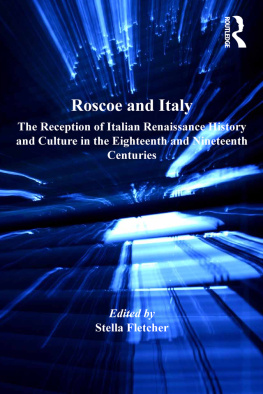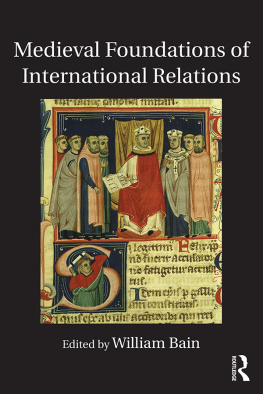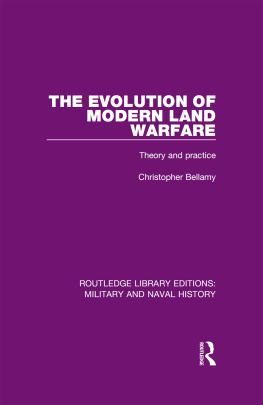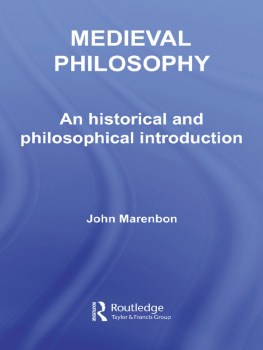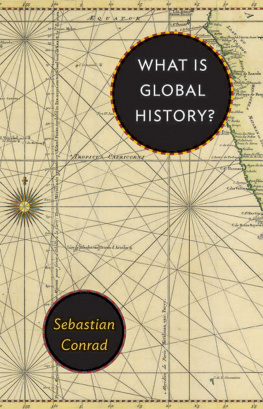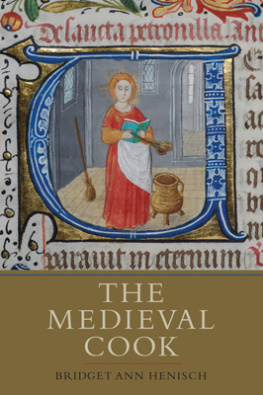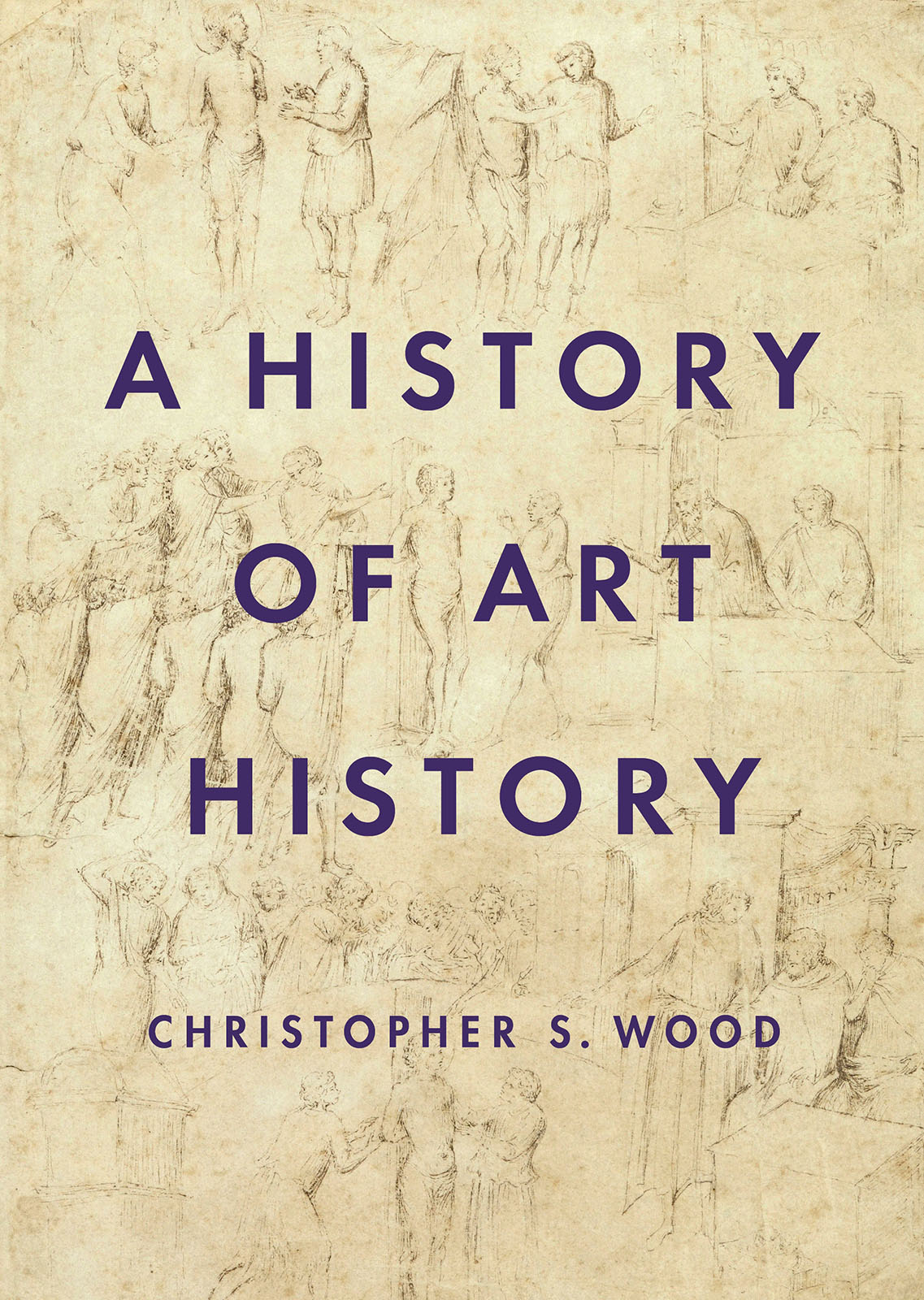Christopher S. Wood
A History
of Art
History
Princeton University Press
Princeton and Oxford
Copyright 2019 by Princeton University Press
Requests for permission to reproduce material from this work
should be sent to Permissions, Princeton University Press
Published by Princeton University Press,
41 William Street, Princeton, New Jersey 08540
In the United Kingdom: Princeton University Press,
6 Oxford Street, Woodstock, Oxfordshire OX 20 1 TR
press.princeton.edu
Cover: Spinello Aretino (?), Scenes of the Martyrdom of St. Potitus (?)
(c. 1400) (detail). Pen drawing, 27.2 19.2 cm. Paris, cole des Beaux-Arts.
Beaux-Arts de ParisDist. RMN-Grand Palais / Art Resource, NY
All Rights Reserved
ISBN: 978-0-691-15652-1
e ISBN : 978-0-691-19431-8
Version 1.0
LCCN: 2018957591
British Library Cataloging-in-Publication Data is available
The author is grateful to his former and present editors at Princeton University Press, Alison MacKeen and Michelle Komie, as well as to the designer, Julie Fry.
CONTENTS
1
Relativism A cast of the dice The origin of art history Three modes of art history: annals, typology, the pastoral fable Empirical scholarship
47
The cleric Adam von Bremen on the images of the Norse gods St. Francis of Assisi as restorer of churches Excavation of Etruscan vases in Arezzo Historiographies of art in China
57
A Byzantine icon in Nuremberg Ancient spolia in Rome The chronicles of Florentine art history: Filippo Villani, Cennino Cennini, and Lorenzo Ghiberti Pliny in the background
69
Martin Luther on progress in the arts Solicitous treatment of old pictures in Italy Barriers to Christian evaluation of non-Christian art: Ludovico de Varthema in India Mexican art admired by Albrecht Drer and Bartolom de las Casas Philological relativism: Ciceronians and anti-Ciceronians Doubts about progress Drer as art tourist Marc-antonio Michiels discriminations Giorgio Vasari, Lives of the Artists The album preface of Dust Muhammad
87
Vasari, the second edition His low opinion of medieval art, shared by his contemporaries Reformation and Counter-reformation Mixed reactions to the rediscovery of early Christian art European travelers descriptions of South Asian monuments Netherlandish artists perspective on their own past
106
Karel van Mander, Book of Painters Italian critics of Vasari Historical art in the British royal collection Antiquarians and iconographers in England and Italy Architectural history, still typological The participatory connoisseurship of Dong Qichang Franciscus Juniuss history of ancient painting Francis Bacon against both art and history
127
Art history according to the French and Roman academies The international art market Creative antiquarianism The Kunst- und Wunder kammer European misunderstandings of African cult practices Italian revisions of Vasari Joachim von Sandrarts history of German art Art history in the Qing period and the art theory of Shitao
141
Bernard de Montfaucons publication of the medieval French monuments Local patriotism among Italian antiquarians Northern European cultivation of the Gothic style Roger de Piles, Jean-Baptiste Dubos, and the subjectivization of aesthetic value Connoisseurship of drawings: Pierre-Jean Mariette
153
Four approaches to art and history: Johann Joachim Winckelmann, Denis Diderot, Horace Walpole, and Giovanni Battista Piranesi
167
J. W. Goethe on Strasbourg cathedral Other partisans of medieval form Some early formulations of aesthetic relativism
176
The history of art on display in the Revolutionary Louvre Friedrich Schlegel at the Louvre Copying and collecting of medieval art in Rome and Paris W. H. Wackenroders and Ludwig Tiecks fantasies of late medieval art Contextualism of J. G. Herder Early studies of South Asian art Goethe and the reassertion of idealism
196
The Romantic flight from history: Philipp Otto Runge The Romantic re-enactment of history: the Nazarenes Romantic scholarship: the monographic or life and works model The history of art according to William Blake Goethes studies of late medieval northern art
215
G. W. F. Hegel: a theory of art supported by a history of art Art history in the German universities The social mnemonics of restoration and festive re-enactment Archeological research New public museums Implications of prosaic or realist art for art historical thought
232
Leopold von Ranke and historicism: each epoch is immediate to God Expansion of the architects menu of forms Travelers guidebooks Conservation and restoration Modernity re-routed through the past: John Ruskin, Gottfried Semper, Eugne Viollet-le-Duc Jacob Burckhardt and the idea of the Renaissance Art criticism in France
252
Professionalization of university-based art history Bourgeois fantasies of the art historical past, especially in Vienna Friedrich Nietzsche on the predicament of the modern historian Resistance to historicism from beyond the university: Eugne Fromentin, Giovanni Morelli, Walter Pater The non-reception of Altamira
267
Alois Riegl and the independent life of form The ennobling theories of form of Konrad Fiedler and Adolf von Hildebrand Absolute aestheticism: Oscar Wilde Poetic art history: Bernard Berenson and Vernon Lee
282
Varieties of well-informed tourism The culture of the Renaissance, continued: Aby Warburg His theory of the image Riegls inversion of European art history Wilhelm Worringers sympathy for the barbarians
302
The avant-garde and art history: Blue Rider and Dada Heinrich Wlfflin, the story of harmony and dissonance
318
The discipline reflects on its own history: Wilhelm Waetzoldt, Julius von Schlosser, Erwin Panofsky A theory of art liberated from history: Carl Einstein
329
Art history and Fascism German and Austrian art historians in the U.S. Walter Benjamin and Martin Heidegger: art and origin The life of forms, extended: Henri Focillon Connoisseurial art history
347
Stella Kramrisch on Hindu architecture and time Architectural histories, real and unreal: Rudolf Wittkower, Sigfried Giedion, Hans Sedlmayr The rendezvous with paleolithic painting Marxist art histories in the U.K. and the U.S.
361
Pax aesthetica: post-war reconciliation between art and modernity, brokered by form Therapeutic medievalisms German melancholia Hope in abstraction: Meyer Schapiro Panofsky in search of equilibrium The college survey course
378
The fault-line in the discipline: contemporary art and everything else Realization of the modernist breach with the past Consequences of arts disengagement from the drama of form Content and truth-telling over form and fiction Against the relativist plurality of values The realist or technological approach to representation: Ernst Gombrich Morphologies of non-art: George Kubler Gombrich and Kublers realist mistrust of art Iconoclasm of John Berger Art history and its readership irrealist thought, acquainted with art Our presentisms
409
445
461
A History of Art History
INTRODUCTION


